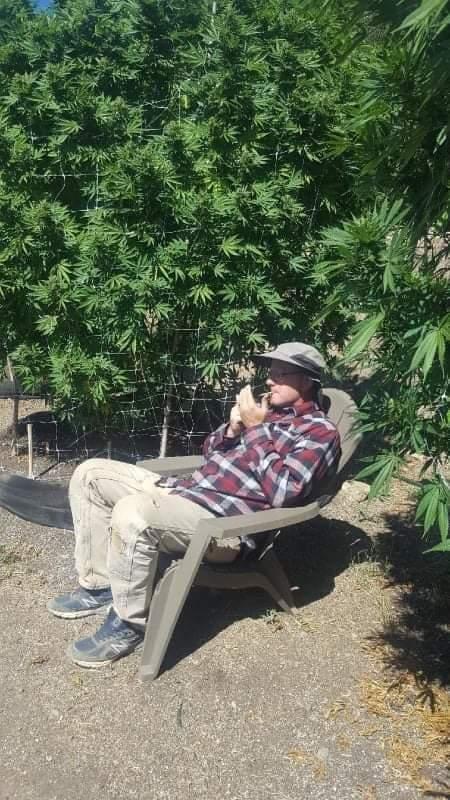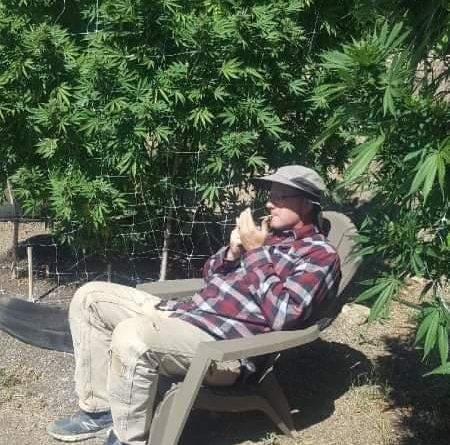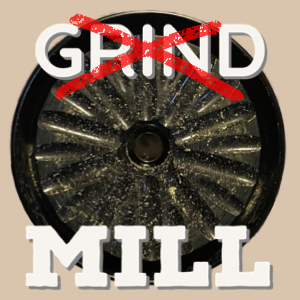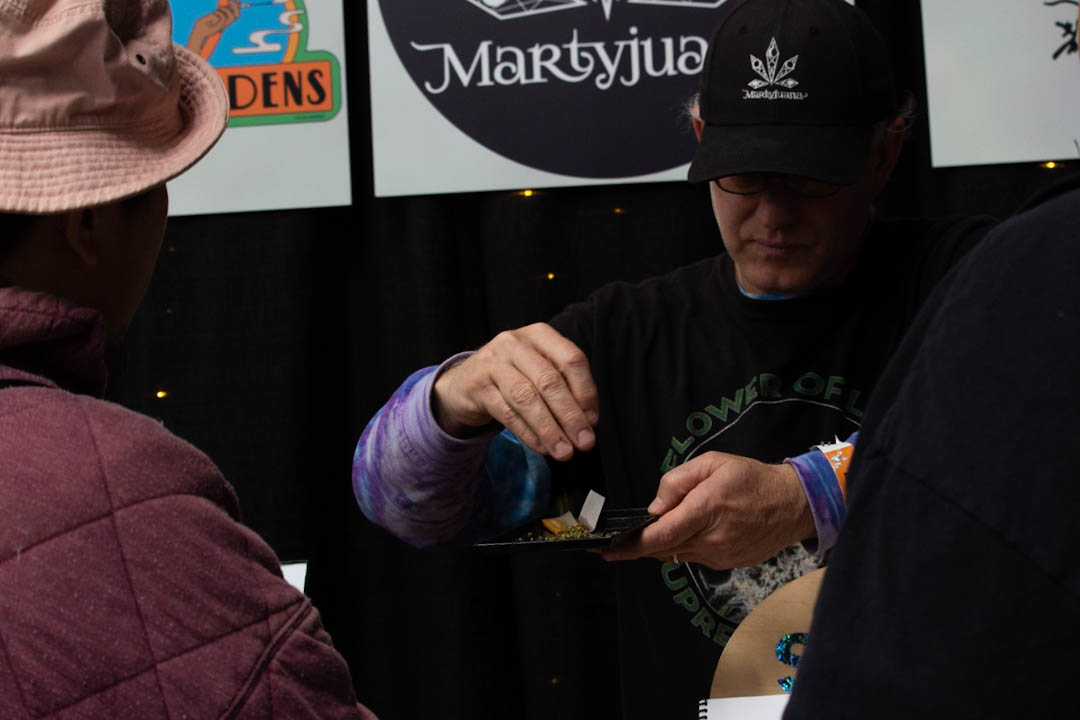Marty Clein on the struggles of small cannabis farmers in California
California’s recreational cannabis market has long been used as an example in the wider world of both what not to do, and what could be. Since the passage of Proposition 64, which legalized recreational cannabis in the state, things have changed drastically for the people that actually grow the cannabis. What happened with the promised 1 acre cap? What has the impact on small cannabis farmers been?
I caught up with Marty Clein of Martyjuana™ – a small cannabis farmer in Mendocino County who cultivates less than a quarter acre of canopy and asked him how he has been. With a sigh, he told me that he has been “focusing on being a farm that makes it through [the process].” That means he has been focused on getting licensing as well as all the needed permissions from the multiple agencies at the County and the State level.
“The goal is to make sure that in a hundred years, if someone else wants to grow weed on this parcel of land, it is possible because it has been licensed as a cananbs farm.”
Clein told me that:
“[I had] decided in 2023 to focus on the permitting that’s required, and also get up to speed with industry branding and marketing, along with advocacy and telling my story.”
Besides being licensed, Clein is also 3rd party Sun+Earth certified (a nonprofit organization that certifies small-scale regenerative organic cannabis farms). He also has the seal off approval locally, participating in the Mendocino Producers Guild’s Best Management Practices and will soon have OCAL – comparable to organic cannabis in California-certifications. Being certified will help signal to the market that the product is superior, resulting in better brand recognition and eventually more sales.
“We make our own compost and we recently made biochar for the first time. We have chickens and goats. We collect rainwater. We companion plant an insectary of fruits and flowers, veggies, and herbs, in addition to the cannabis. We source as many amendments as we can from our land, or as locally as possible. We are working toward a closed loop system. That’s all a part of what we mean when we talk about regenerative practices.”
So far, that financial benefit has yet to be realized. as regulations and market logistics are so difficult in so many areas for small farms.
“The margins still suck. Until I can realize retail value for my brand then I am just a subsistence farmer for the big white label companies. I didn’t get involved with cannabis to sell my products wholesale. That’s why 6 years ago I decided to move away from bulk sales and do branding because I saw the writing on the wall.”
Despite years of effort, and being there to try and influence the passage of Prop 64, Clein’s small cannabis farm is still struggling. Over the years, many other small farmers in California have thrown in the towel because of the patchwork off local, state, and federal legal requirements and lack of common business support like for example, tax write offs available to other industries. He told me:
“I’m 7 years in this business and I still don’t have a bank account with my business name. Tomorrow, I have to drive three hours just to pick up money from a distributor that received it on my behalf from a retailer. This is the screwy system I am forced into due to the over-regulation.”
How small cannabis farmers experienced the passing of Prop 64 in 2016, and implementation in 2018
Clein was not scared to point fingers and name names.
Suffice to say, the version of Prop 64 that was promised to the small farmers – with the 1 acre cap and a 5 year period for California’s legacy cutivators to transition from the medical to the recreational markets – wasn’t the version that ended up on Gavin Newsom’s desk.
“Going back to 2015, the year before California voted for prop 64, Gavin Newsom and some of the legislators from both the House and Senate came up to Northern California in what was called the Blue Ribbon Commission.”
The California government had a very keen interest in passing recreational cannabis at that time. Clein described:
“Before Prop 64, there were other recreational ballot measures that didn’t pass. This was actually our second round of trying to catch up with Colorado and Oregon and Washington with recreational.”
Clein heard many promises from Mendocino County & the State of California such as narratives like they’d get family members out of jail for small cannabis offenses, that no entity let alone a single farmer could grow more than 1 acre. And although he didn’t vote in spport of Prop 64, he wanted to continue to cultivate. Clein remembered hearing from the Blue Ribbon Commission:
“We’re not going to allow any entity or farmer to grow more than 1 acre.”
Clein emphasized:
“That was stated in Prop 64 and it was very clear. Everyone that read it saw that the government was going to “protect” small farmers throughout California. Not just in the Emerald Triangle. They were going to protect anyone growing less than an acre. They were going to give them 5 years from Jan 1st, 2018 to Jan 1st, 2023 – where no singular farm or entity could grow more than 1 acre.”
In fact, in Mendocino County, additional county level restrictions ensure that no farm could grow more than a quarter acre. Once the state sets its law, counties are able to apply additional stipulations. So too can cities and townships. The local jurisdictions have been given so much leeway and because they can add extra taxes as well as be more restrictive than state law, “local control” as it is being called, is causing problems across the sectors of the industry from retail to cultivation.
What gutted Prop 64?
Clein remembers distinctly back in 2018, when Prop 64 was being implemented. He reminded me that temporally, the tale had moved to the part where we yell at Snow White and tell her not to eat the apple.
“Once the law was passed, cultivation was at first put under the auspices of the California Department of Agriculture. During their rulemaking process, there were loopholes put in place so that people were permitted to stack licenses, meaning one entity could hold many, one as many as 70 licenses only two months into permitting.
60 days after Jan 1st, 2018, there was a State Hearing held in Ukiah, CA. Assemblyman Wood and Senator McGuire, along with the director fo the CDFA and others were there and it was discovered that it was not working as well as it should be.”
To that end, Clein was supporting the California Growers Association (CGA) to try and reinstate the one acre cap.
“I was in CGA, at the time they were the largest legacy small farm voice in Sacramento lobbying to effect change in this rulemaking process which was supposed to make Prop 64 better. To clarify, the CGA was an advocacy organization that was doing work akin to what Origins Council does now, lobbying on behalf of legacy producers.”
The CGA negotiated with lobbyists, shook hands with politicians, and thought they had succeeded in implementing sensible cannabis policy at the California state level, and left the Capitol Building late that night thinking everything was going to be OK for small farmers.
Despite that, a group of hard money lenders wielded their influence over government at the 11th hour.
“Corporate cannabis knew by creating loopholes, that venture capital can start more immediately lending at volume.”
Sean Parker, who was the biggest financial contributor to the Prop 64 campaign, pushed for corporate cannabis. For those that don’t know, that’s the same Sean Parker of Napster and Facebook fame – you’ve seen the character portrayed by Justin Timberlake in The Social Network. Besides his VC accolades which most people know, Clein told me the part that most people don’t know:
“He was a big part of funding Prop 64 and the corporate lobbyists that came along at this time threw the legacy cultivators under the bus, or so they thought.”
All Caps: 1 acre cap
“When you deal with legislation you don’t like, you have to litigate. So immediately the CGA filed an injunction to stop the legislative loopholes created by the California Department of Agriculture’s interpretations of regulations geared toward corporate investors, not heritage producers., because it was going to hurt small farms and go against everything that Prop 64 stood for.”
But to no avail. As a sign of how much moneyed interests had been banking on the one acre cap being replaced by the alloownace to hold multiple licenses, Clein told me that by March 1, everyone knew that the large commercial farms were already being permitted in Salinas & Santa Barbara.
“The removal of the one acre cap happened because corporate cannabis wanted to scale.”
Back to Sacramento
Clein has learned many lessons along the way, and is focusing on taking this ongoing fight back to Sacramento now that Mendocino Conty has just recenty reversed course with tax relief and streamlined permitting. He told me:
“I just got my local permit renewal and renewed my provisional license. Once I can secure an annual license, then it’s time to step off the farm and go political. There is always more to advocate for, like AB1111 the upcoming farmers market and direct sales bill that would benefit small farmers by letting them do business directly with customers at events. We the people need many voices to speak up in Sacramnto and in Washington.”
He pointed to some examples of “government help” to the small cannabis farmers that haven’t really hit the mark:
“Microbusiness licenses were set up to help small farms but it helps single owned dispensary or small/medium processors. But very few small farms have the right type of building or zoning to even apply for a microbusiness license.The government has given so-called handouts to small farmers but it doesn’t actually help.”
Clein provided another example:
“A year and a half ago, the State removed the cultivation tax – which was the first tax of its kind in America just for growing a plant. The cannabis tax was even worse than the British taxes for tea that led to the Boston Tea Party. The tax went up as the price per pound went down. But when they removed it, people with cultivation licenses thought that the price would go up by the approximately $160 in tax, but it went down instead. We didn’t realize any of that help.”
Reminiscing on these times caused Clein to get a little emotional. He enjoined:
“Fuck them, there are going to be some farms that make it through but they’ve destroyed our rural communities up here. Cannabis money paid for a lot of social services throughout the Emerald Triangle for decades. Tax records show that garden supply and hardware store profits are down by like 40% this year. And, restaurants and storefronts sit empty, the area where cannabis cultivatoin once thrived is a ghost town.”
The wine country analogy
Clein pointed to a previous moneyed cultural shift in a nearby county with market implications that many are familiar with.
“It’s a generational shift in two things: wealth and real estate. This happened in the Napa Valley in the 60s and 70s. The small farms – when Napa became Napa – the mom and pop vineyards with just a few acres were largely bought out by corporate interests. Those smaller 2-3-4 acre lots became the estate houses for the bigger vineyards.”
It’s not all doom and gloom though.
“The families and the farms that remain, and still have those small lots. They sell their wine for a premium at their private wineries, so exclusve, people hae to visit Napa to even know about them, then join a wine club and receive perks forever, if you so desire. It’s a good model. I believe that small cannabis farms can survive, too. A good portion of them that made it this far are of the mindset that they will make it through ‘no matter what you do to me.’”
Even within a county, there are certain regions that may perform better over time. Clein mused:
“I think we’re too rural in areas like Covelo and Laytonville to see a big increase in tourism any time soon. I think Willits has the best chance, Ukiah even better, Hopland even better. They’re closer to the green zone – to the Bay Area where the money is at. Willits has a chance because it’s on the way to Fort Bragg. But I also think that these Mendocino cities and towns could be hubs that can send interested parties to the farms situated on more off-beaten paths. And create in-town cooperative consumption lounges that act as a visitor center with a wine tasting room atmosphere. If it’s done right, I believe people want to learn more and experience the back-to-the-land movement that created this legendary cannabis region. Mendocino County, the gateway to the Emerald Triangle, can be the center of cannabis history in the next few decades.”
Clein tied it all back to the work on the farm.
“Our farm is Sun + Earth certified. It’s incredible what they’re doing to preserve the planet. If we can treat each farm like a holistic living system and have each farm become a ripple effect of joy and happiness through flower and give people the connection to where and how the plant is grown, then we become super sustainable. We become the farm that is the beacon on the hill.”
Regenerative farm practices are just better, and that’s industry leading.
“There is hope that big farms are coming on board with less monoculture and more clean cultivation practices because it’s better for the planet. Things happen cyclically, and I would add, synergistically almost to the point of magically, on a regenerative farm. It’s a closed loop system.
Despite the myriad issues, the small cannabis farmers of Mendocino County are still trucking along. Clein ended with a powerful thought:
“One thing that Mendocino County can say: We are a true small farm county. That means it is a craft. You are going to get more love and attention to each flower.”

Featured image by Laura Clein.
Founder of The Highest Critic
Unpaid /r/trees mod
Certified Ganjier
Kine bud enthusiast





